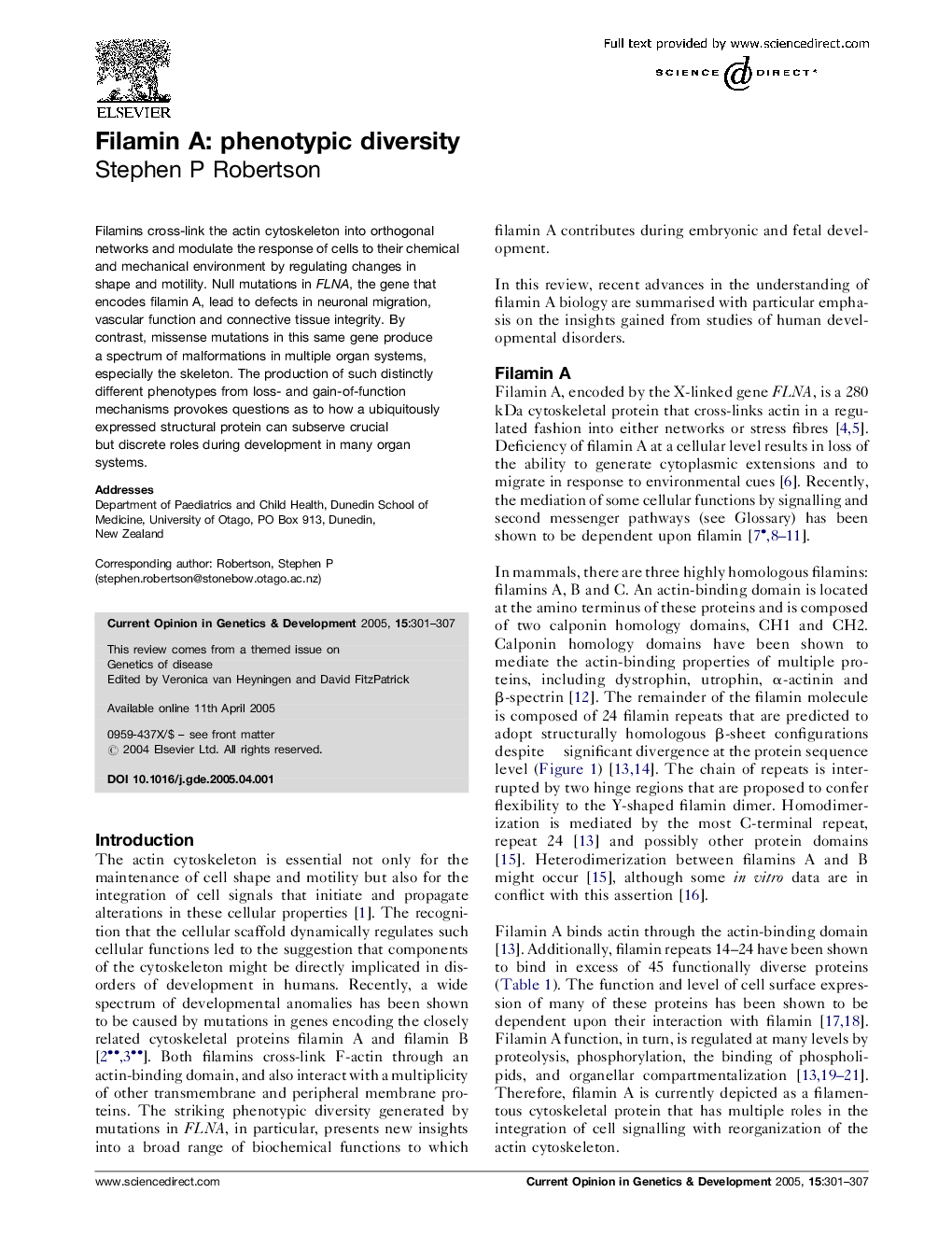| Article ID | Journal | Published Year | Pages | File Type |
|---|---|---|---|---|
| 9107591 | Current Opinion in Genetics & Development | 2005 | 7 Pages |
Abstract
Filamins cross-link the actin cytoskeleton into orthogonal networks and modulate the response of cells to their chemical and mechanical environment by regulating changes in shape and motility. Null mutations in FLNA, the gene that encodes filamin A, lead to defects in neuronal migration, vascular function and connective tissue integrity. By contrast, missense mutations in this same gene produce a spectrum of malformations in multiple organ systems, especially the skeleton. The production of such distinctly different phenotypes from loss- and gain-of-function mechanisms provokes questions as to how a ubiquitously expressed structural protein can subserve crucial but discrete roles during development in many organ systems.
Related Topics
Life Sciences
Biochemistry, Genetics and Molecular Biology
Developmental Biology
Authors
Stephen P Robertson,
